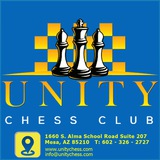12...Nd4!
For the first time, this move played in the game of Korchnoi - Karpov (m/21) World Championship Match in 1987.
13.Qb1!
A)The knight cannot be taken 13. exd4
exd4+ 14. Ne2 Ng4 and Black wins.
B)The panicky 13. Qa4 {led to a quick draw in Karjakin-Nakamura, Bilbao 2016:} Qxa4 14. Nxa4 Nc2+ 15. Ke2 Nd4+ 16.Ke1 (16. exd4 exd4+ 17. Kd3 Bf5+) 16... Nc2+ =
13... Bf5 14. Bd3 Bxd3 15.Qxd3
For the first time, this move played in the game of Korchnoi - Karpov (m/21) World Championship Match in 1987.
13.Qb1!
A)The knight cannot be taken 13. exd4
exd4+ 14. Ne2 Ng4 and Black wins.
B)The panicky 13. Qa4 {led to a quick draw in Karjakin-Nakamura, Bilbao 2016:} Qxa4 14. Nxa4 Nc2+ 15. Ke2 Nd4+ 16.Ke1 (16. exd4 exd4+ 17. Kd3 Bf5+) 16... Nc2+ =
13... Bf5 14. Bd3 Bxd3 15.Qxd3
10... Ne4!?
An interesting move that was introduced by Jussupow in 1992 against Gelfand. 10...Be7 is the main line here.
11. Nb5
11. Nxe4!? dxe4 12. Qxe4 Bxa3! 13. bxa3 Qxa3+14. Kd2 Rd8+ 15. Ke1 (15. Bd3 f5) 15... Qc3+ 16. Ke2 Qb2+ 17. Rd2 Rxd2+ 18.Nxd2 e5 19. Bg3 Bg4+ 20. Qxg4 Rd8.
11... a6 12. Nc7 e5 13. Rxd5 exf4 14. Qxe4 Qxc7 15. Rxc5 fxe3 16. Bd3 g6 17. fxe3 Be6 =
An interesting move that was introduced by Jussupow in 1992 against Gelfand. 10...Be7 is the main line here.
11. Nb5
11. Nxe4!? dxe4 12. Qxe4 Bxa3! 13. bxa3 Qxa3+14. Kd2 Rd8+ 15. Ke1 (15. Bd3 f5) 15... Qc3+ 16. Ke2 Qb2+ 17. Rd2 Rxd2+ 18.Nxd2 e5 19. Bg3 Bg4+ 20. Qxg4 Rd8.
11... a6 12. Nc7 e5 13. Rxd5 exf4 14. Qxe4 Qxc7 15. Rxc5 fxe3 16. Bd3 g6 17. fxe3 Be6 =
26. h4??
Karjakin should have settled for a draw with 26.Rd6 Qxc4 27. Rxg6+ hxg6 28. Qxg6+ Kf8 29. Qf6+ Kg8 30. Qg6+ =.
26... Ne5!
With the idea of 26...Ng4, trapping the white queen.
27. Nf3 Qe4+ 28. Ka2 Qxc4+ 29. Ka1 Ng4 30. Qc1 Qxc1+ 31. Rxc1 Kg7 32.h5 Nf6 0-1
Karjakin should have settled for a draw with 26.Rd6 Qxc4 27. Rxg6+ hxg6 28. Qxg6+ Kf8 29. Qf6+ Kg8 30. Qg6+ =.
26... Ne5!
With the idea of 26...Ng4, trapping the white queen.
27. Nf3 Qe4+ 28. Ka2 Qxc4+ 29. Ka1 Ng4 30. Qc1 Qxc1+ 31. Rxc1 Kg7 32.h5 Nf6 0-1
31.e5!
White's last move has set a trap into which Black falls.
31...Qe4+ 32.Qg2 Q×f4?? 33.R5d4 1-0
White's last move has set a trap into which Black falls.
31...Qe4+ 32.Qg2 Q×f4?? 33.R5d4 1-0
15.b4!
Unexpectedly White begins play on the opponent's traditional part of the board. This idea was suggested to me by the poor coordination of the black pieces and the possibility of an attack on the d6-pawn.(Kasparov)
15...Be7
A rather belated retreat, but nothing better is apparent;
as the alternatives are weaker: 15...cxb4?! 16.Nxf6+ Qxf6 17.Ne4 Qe7 18.Qxb4 Bxd5 19.Qxd6 Qe6 20.Rfd1 Bxe4 21.Qxe6 fxe6 22.Bxe4 Ra7 23.Rd6+/-.
Or 15...Bxc3?! 16.Rxc3 cxb4 17.Re3 with the threats of Nxd6 and Qxb4.
16.bxc5! bxc5 17.Qf4 The main aim is not to allow the knight at b8 to come out.
Unexpectedly White begins play on the opponent's traditional part of the board. This idea was suggested to me by the poor coordination of the black pieces and the possibility of an attack on the d6-pawn.(Kasparov)
15...Be7
A rather belated retreat, but nothing better is apparent;
as the alternatives are weaker: 15...cxb4?! 16.Nxf6+ Qxf6 17.Ne4 Qe7 18.Qxb4 Bxd5 19.Qxd6 Qe6 20.Rfd1 Bxe4 21.Qxe6 fxe6 22.Bxe4 Ra7 23.Rd6+/-.
Or 15...Bxc3?! 16.Rxc3 cxb4 17.Re3 with the threats of Nxd6 and Qxb4.
16.bxc5! bxc5 17.Qf4 The main aim is not to allow the knight at b8 to come out.
17.Rc7!
At first sight White shows a frivolous lack of concern for his development problems, but in the struggle for the initiative he has already embarked on a slippery path, where it is not rules that have to be reckoned with, but exceptions to them.
If 17.Bb5 both 17...Bb7 followed by . ..e7-e6 and the immediate 17...e6! are good. (18.e5? is not possible because of 18...Rxd5!). The rook move is aimed against both these possibilities (17...Bb7?? 18.Bxa5; 17...e6 18.e5).
17...Bg4!
With the obvious desire to punish the opponent.
18.Ba6! e6!
The retribution seems imminent, but from this point the white pieces, although in a minority (without the rook on h1), display amazing resourcefulness.
19.Ng5!
Dynamic play: here the fight for an advantage is closely connected with safety concerns (after all, White is behind in development!).
At first sight White shows a frivolous lack of concern for his development problems, but in the struggle for the initiative he has already embarked on a slippery path, where it is not rules that have to be reckoned with, but exceptions to them.
If 17.Bb5 both 17...Bb7 followed by . ..e7-e6 and the immediate 17...e6! are good. (18.e5? is not possible because of 18...Rxd5!). The rook move is aimed against both these possibilities (17...Bb7?? 18.Bxa5; 17...e6 18.e5).
17...Bg4!
With the obvious desire to punish the opponent.
18.Ba6! e6!
The retribution seems imminent, but from this point the white pieces, although in a minority (without the rook on h1), display amazing resourcefulness.
19.Ng5!
Dynamic play: here the fight for an advantage is closely connected with safety concerns (after all, White is behind in development!).
Unity Chess Multiple Choice 491
public poll
C: Bg5 – 4
👍👍👍👍👍👍👍 50%
Hamid.S, Jayden, @RichardPeng, @AryanLeekha
A: f5 – 2
👍👍👍👍 25%
@soheil_hooshdaran, @Afshin3333
B: Bf6 – 2
👍👍👍👍 25%
Mieke, Saghana
👥 8 people voted so far.
public poll
C: Bg5 – 4
👍👍👍👍👍👍👍 50%
Hamid.S, Jayden, @RichardPeng, @AryanLeekha
A: f5 – 2
👍👍👍👍 25%
@soheil_hooshdaran, @Afshin3333
B: Bf6 – 2
👍👍👍👍 25%
Mieke, Saghana
👥 8 people voted so far.
